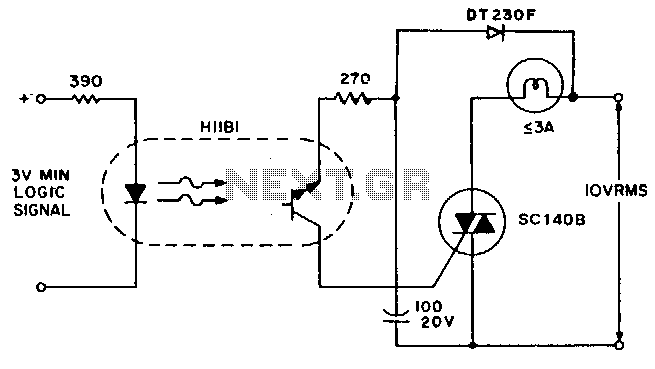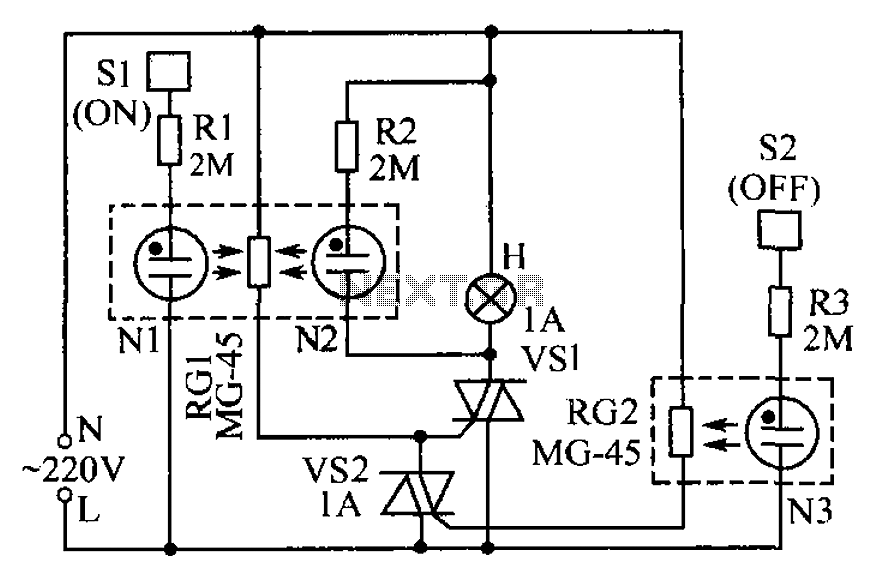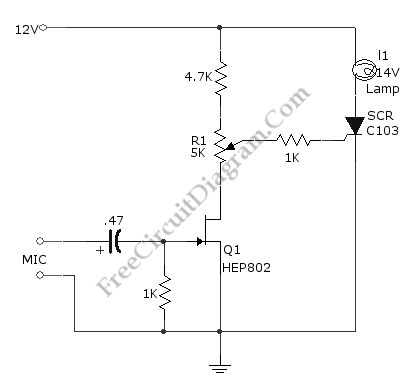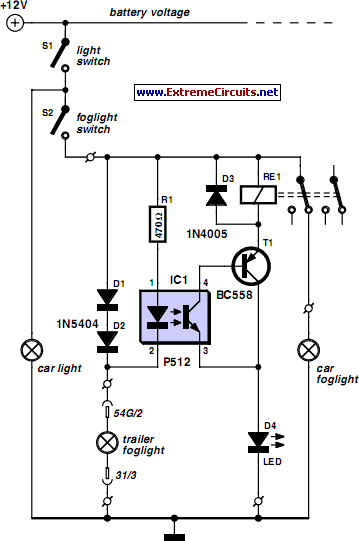
Dark Activated Terrace Lamp
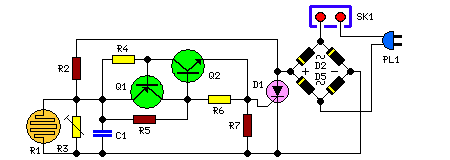
This is a compact circuit that can be wired in parallel with existing switches. The device enables one or more lamps to illuminate at sunset and turn off at dawn. It incorporates components Q1 and Q2.
The circuit is designed to automate lighting control based on ambient light conditions, specifically transitioning lamps to an 'on' state at sunset and returning them to an 'off' state at dawn. The integration of this circuit with existing switch configurations allows for straightforward installation without the need for extensive rewiring.
The core functionality is typically achieved using a light-dependent resistor (LDR) or a phototransistor, which senses the ambient light levels. When the light level drops below a predetermined threshold (indicating sunset), the circuit activates Q1, which in turn allows current to flow to the connected lamps, illuminating them. Conversely, when the light level rises above the threshold (indicating dawn), Q2 is activated, interrupting the current flow and turning off the lamps.
The compact design of the circuit ensures that it can be easily accommodated within the existing switch enclosures, maintaining aesthetic integrity while enhancing functionality. Additionally, the parallel wiring configuration allows the user to retain manual control via the existing switches while benefiting from the automatic lighting feature.
In summary, this circuit serves as an efficient and user-friendly solution for automating outdoor or indoor lighting systems, providing convenience and energy savings by ensuring lights are only on when necessary.Compact circuit, Can be wired in parallel to existing switches This device allows one or more lamps to illuminate at sunset and turn off at dawn.Q1 and Q2.. 🔗 External reference
The circuit is designed to automate lighting control based on ambient light conditions, specifically transitioning lamps to an 'on' state at sunset and returning them to an 'off' state at dawn. The integration of this circuit with existing switch configurations allows for straightforward installation without the need for extensive rewiring.
The core functionality is typically achieved using a light-dependent resistor (LDR) or a phototransistor, which senses the ambient light levels. When the light level drops below a predetermined threshold (indicating sunset), the circuit activates Q1, which in turn allows current to flow to the connected lamps, illuminating them. Conversely, when the light level rises above the threshold (indicating dawn), Q2 is activated, interrupting the current flow and turning off the lamps.
The compact design of the circuit ensures that it can be easily accommodated within the existing switch enclosures, maintaining aesthetic integrity while enhancing functionality. Additionally, the parallel wiring configuration allows the user to retain manual control via the existing switches while benefiting from the automatic lighting feature.
In summary, this circuit serves as an efficient and user-friendly solution for automating outdoor or indoor lighting systems, providing convenience and energy savings by ensuring lights are only on when necessary.Compact circuit, Can be wired in parallel to existing switches This device allows one or more lamps to illuminate at sunset and turn off at dawn.Q1 and Q2.. 🔗 External reference
